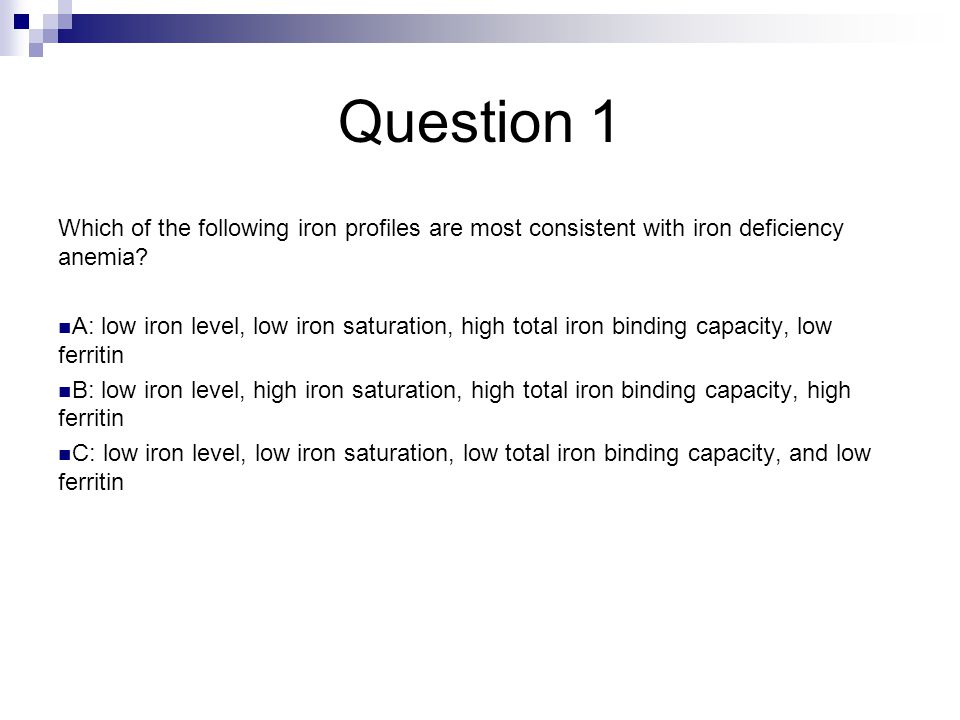What Is Low Iron Saturation
Iron is one of the most essential nutrients that is required for the healthy functioning of the human body. Iron is a key component of hemoglobin, which is a protein that helps in transporting oxygen throughout our body. It also plays a vital role in energy production and the synthesis of DNA.
It facilitates the production of vital enzymes and helps in strengthening the immune system. Since iron is required for several vital bodily processes, an iron deficiency or overload is bound to have serious repercussions on one's health. There are several blood tests that can help in determining the level of iron in the body.
- Although most RLS patients show normal systemic levels of iron, as indicated by any of the usual serum iron measures (e.g., ferritin, percentage transferrin saturation, and total iron-binding capacity), there are some indications of abnormalities in systemic iron metabolism. The most striking finding is the reported rapid iron loss after an IV iron treatment of some RLS patients.
- UIBC and TIBC blood tests will have high results. Ferritin and total iron testing will have low results. Hemochromatosis: This health condition will have a high iron saturation rate. Total iron and ferritin blood tests will also be high. TIBC and UIBC will generally be low.
While serum iron test measures the amount of circulating iron that is bound to a blood plasma glycoprotein called transferrin, ferritin test measures the levels of ferritin. Ferritin is an intracellular iron storage protein that releases iron when the levels of iron in the blood is below the normal range. Other tests that may also be ordered include total iron binding capacity (TIBC) and transferrin saturation. Transferrin saturation (TSAT), which is also referred to as iron saturation, is a valuable diagnostic test that helps to determine if the body is transporting or binding iron in the right manner or not. Once iron gets absorbed by the intestines, it is transported to other locations with the help of a blood protein called transferrin.
TSAT, which is measured as a percentage, is calculated by dividing the level of serum iron by the total iron binding capacity (TIBC) and multiplying by 100. The percentage tells how much of the serum iron is actually bound to the available transferrin. While TIBC is the total amount of iron that can be bound and transported by transferrin, serum iron is the total amount of iron in the blood. If iron absorption is abnormally high, transferrin gets saturated with iron. On the other hand, TSAT percentage will be low if iron absorption is low. Under normal circumstances, serum iron must lie between 60 to 170 μg/dl, whereas reference range for TIBC is 240-450 μg/dl. TSAT should be 15-50% for males and 12-45% for females.
Iron Deficiency Anemia low transferrin saturation, and a high total iron-binding capacity. Soluble transferrin receptor and erythrocyte protoporphyrin testing.
Low Iron Saturation In Blood Test

Serum iron, TIBC and ferritin tests are usually performed together. If the test results reveal low levels of serum iron and low TSAT, it is indicative of an iron deficiency or anemia. Abnormally high levels of iron in the blood and high TSAT are indicative of hemochromatosis or iron poisoning. Poor eating habits emerge as one of the main reasons for low iron saturation. Iron is an essential nutrient which is why there's a great need to include sources of iron in one's diet in the required quantity. Those who don't eat food items that contain iron are likely to suffer from an iron deficiency.

People who follow a strict vegetarian diet are at a greater risk of developing the symptoms of iron deficiency anemia. At times, iron is not absorbed and stored as per the body's needs. The body's ability to absorb iron might be adversely affected due to intestinal disorders such as celiac disease or Crohn's disease. Lack of gastric intrinsic factor can inhibit the absorption of vitamin B12 which in turn could affect the absorption of iron. Consumption of certain food items or drugs could also interfere with the absorption of iron.
Low iron levels could also be caused due to blood loss, parasitic infections or prolonged use of certain drugs. In case of women, an iron deficiency could be caused by heavy menstrual bleeding or pregnancy. Since low TSAT levels indicate an iron deficiency/anemia, a person who has been diagnosed with a low TSAT might experience chronic fatigue, dizziness, weakness and headaches.
Download game mod pc offline. Other symptoms that might be experienced include lightheadedness, pale skin, low blood pressure, irritability, sore tongue or abdominal pain. If one has been experiencing such symptoms, one must consult a doctor soon. If the blood tests reveal low levels of iron in blood, one must follow a healthy diet in order to restore the TSAT levels to normal. In case of a severe iron deficiency, doctors may prescribe iron supplements. Intestinal disorders could affect the process of iron absorption thereby lowering the TSAT levels. Thus, intestinal disorders must be treated at the earliest. Having foods rich in vitamin C will also help in aiding iron absorption.
Since excessive consumption of foods that are rich in calcium can inhibit iron absorption, it would be a good idea to cut down on your intake of dairy products or calcium supplements. If diagnostic tests reveal low TSAT percentage, don't pop iron pills on your own. Nutritional supplements must always be taken under medical supervision, so consult a doctor regarding the dosage of iron supplements.